See Guangzhou again-visiting Xiguan
D1:
Walking method: Self-driving by plane (Nanjing-Guangzhou)
Walking route: Nanhai Temple (Tour time: 1.5 hours, ticket: 15 yuan) Lingnan Impression (Arrived at 16:40, closed at 5 o'clock, unable to enter) Guangzhou University Town Science and Technology Museum (appearance) Foraging on Beijing Road
Check-in: CityNote Sinoo Hotel (Guangzhou Beijing Road Dafosi Park Front Subway Station Branch)271 yuan/standard room
D2:
Walking method: walking, renting
Walking routes: Lu Xun Memorial Hall (1.5 hours, online reservation in advance, tickets are not available), Guangdong Museum (1.5 hours, online reservation in advance, tickets are not available), United Bookstore
Check-in: Beijing Road Sino Hotel
D3:
Walking methods: walking, subway
Walking routes: Nanyue Palace Museum (1.5 hours, no tickets), Yuexiu Park (2 hours, online reservation in advance, no tickets), Guangzhou Museum, Yuehai Tower Foraging
Check-in: Jinzhou Hotel (Guangzhou Yuexiu Park Subway Station Branch) 207 yuan/standard room
D4:
Walking method: walking, renting
Walking routes: Sun Yat-sen Memorial Hall (free tickets for medical staff), Beijing Road, Tao Tao Ju foraging
Check-in: Guangzhou Huamao Guangfu Cultural Hotel 151 yuan/standard room
D5:
Walking methods: bus, taxi, subway, plane (Guangzhou-Nanjing)
Walking route: Shangxia Ninth Street, Xiguan Dawu, Liwan Lake Park, Xintai Le Dining
Walking along the familiar streets of Shangxiajiu Street hurriedly, looking at the time, I still decided to go to Xiguan Dawu. Every time I travel, I always hope to see more and walk more within the range of physical strength. "Xiguan Da House" is familiar with it, but I have not been able to visit it once since I have been to Guangzhou many times. This time I was finally satisfied.
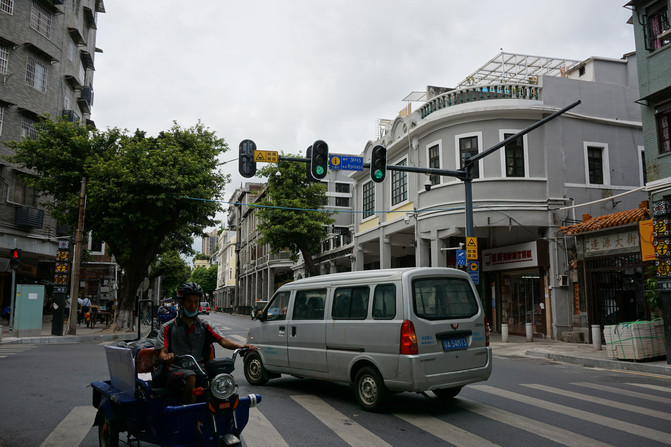
xiguan big house
Address: Liwan District, Guangzhou
Shang Xia Jiu Street is not far from Xiguan Dawu. In order to save time, you choose to take a taxi and reach your destination at a starting price.
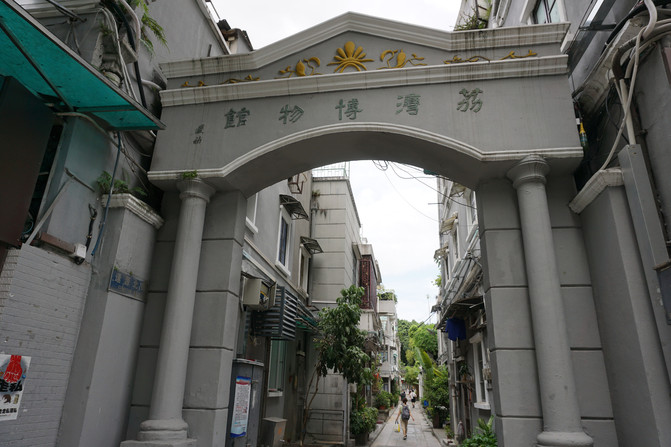
Guide map of Yongqingfang Tourist Area in Xiguan, Guangzhou. Xiguan Yongqingfang includes five connected historical and cultural districts, including Fengyuan Street-Liwan Lake, Changhua Street, Enning Road, Duobao Road, and Baoyuan Road. The core areas are mainly Yongqingfang, Cantonese Opera Art Museum, and Litchi Bay. Three landmark scenic spots.
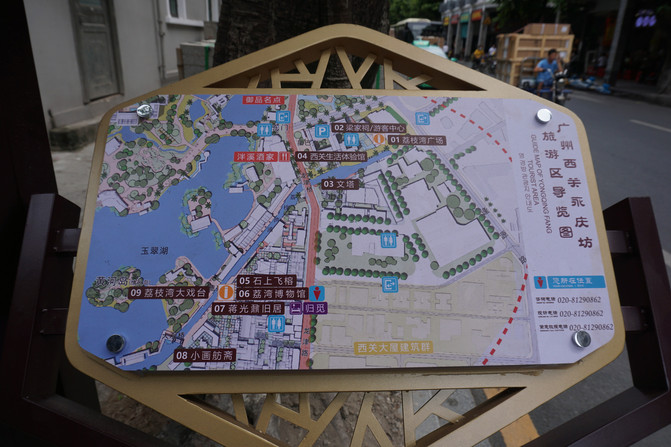
Dive into Fengyuan North Street, an alley with deep flowers and trees. Although it is called a "street", it is actually impossible to walk by car. You can only walk and ride through it.
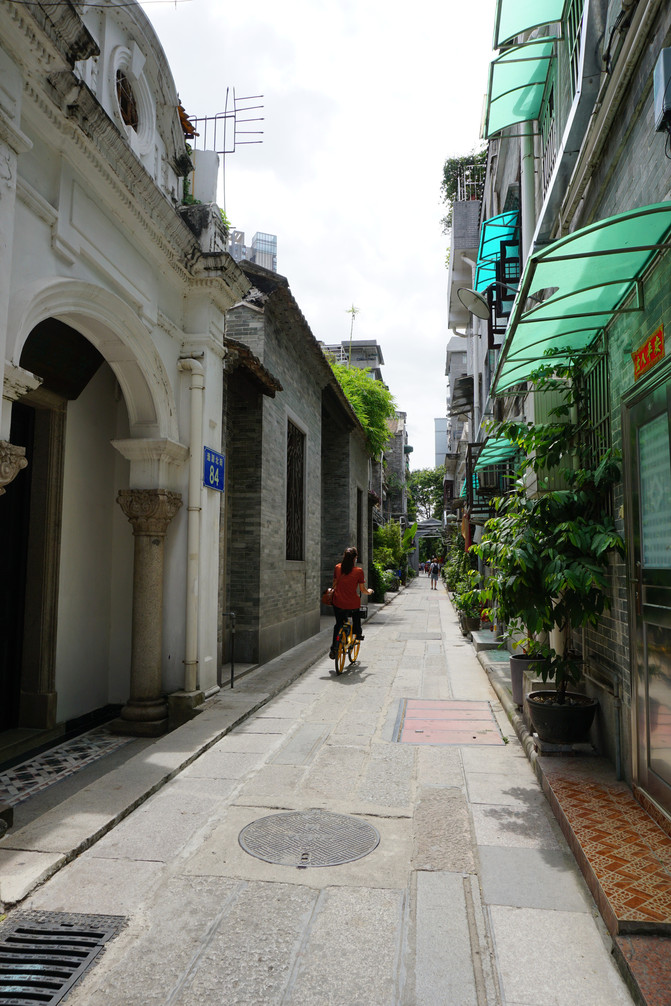
A street full of market atmosphere.
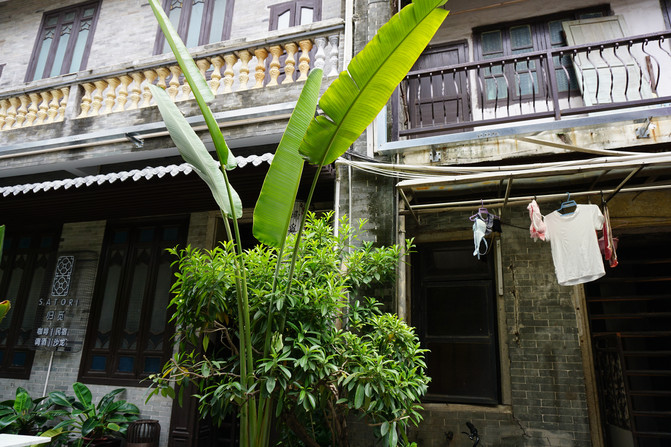
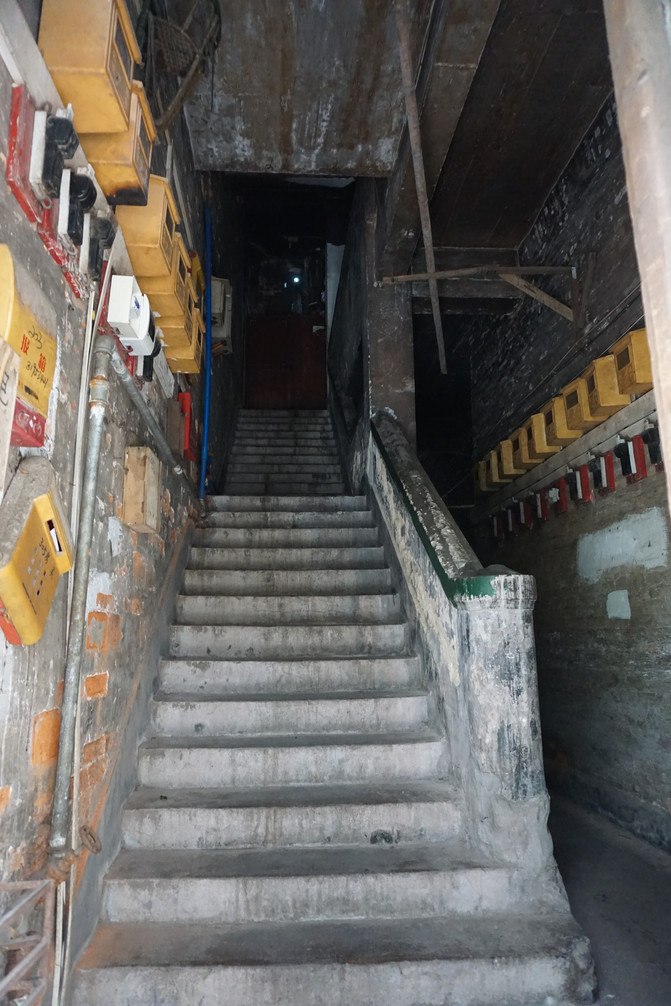
No. 80 Fengyuan North Street, a traditional Xiguan residence. The doors of residential buildings are very special, making people feel that they are guarded at all levels.
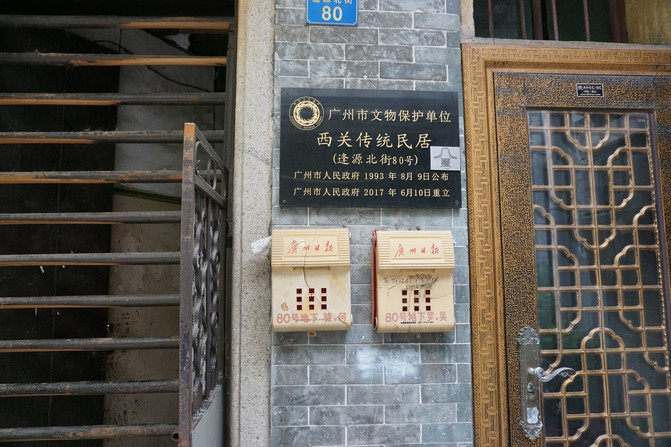
No. 82 Fengyuan North Street is the "Xiguan Folk Museum" of Liwan Museum. Why is the main door and the second door closed? From the closed doors, you can more clearly see the three unique doors of Xiguan houses: the outermost side is a half-high screen door called the "low-foot hanging door" or "corner door", which is used to block the sight of pedestrians when the innermost wooden door is opened; in the middle is a "gate" composed of 13 or 15 hardwood bars; and at the innermost side is the kind of half-open hardwood door found in ordinary courtyards. This design has ventilation and security functions, which is especially suitable for Lingnan's hot and rainy climate.
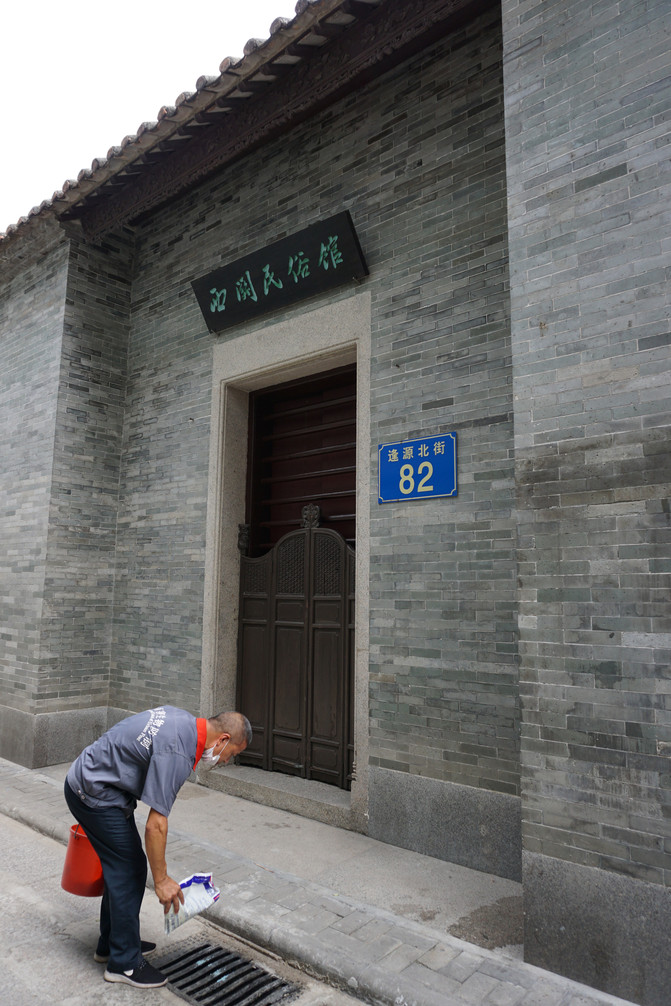
No. 84 Fengyuan North Street, this tall white building has a Western-style architectural style.
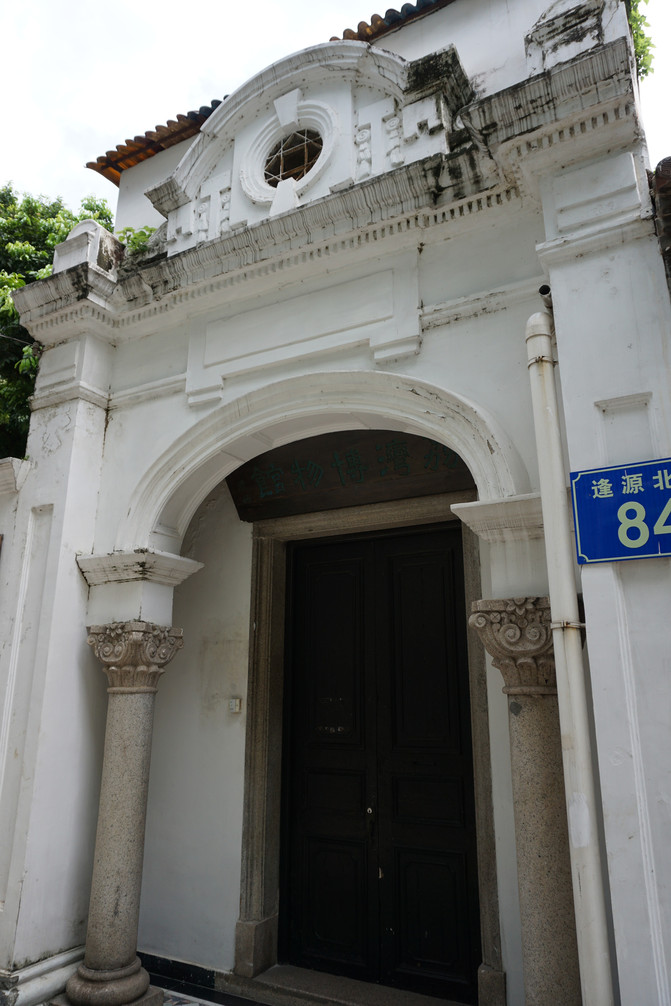
This is the location of the Liwan Museum, and the door is also closed. Unfortunately, think about it because today is Monday. I couldn't go in and visit, so I could only take a look at this Republican period building outside the house.

This mansion is the former residence of Mr. Chen Lianzhong, a national capitalist during the Republic of China. This mansion built in the early years of the Republic of China is different from Western buildings and is an innovation of traditional houses in Guangzhou. The window lintels and fence decorations of Western buildings are integrated with the traditional Xiguan House to make them more unique.
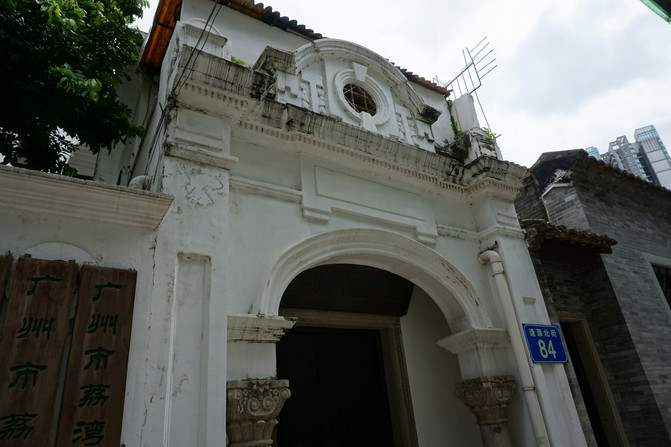
There is a Qingyun Lane on both sides of the big house. Qingyun Lane takes the meaning of "smooth progress in blue clouds" and is also known as "cold lane","fire lane","water lane", etc. In the past, it had various functions such as ventilation, fire prevention, drainage, lighting, drying, transportation, and planting flowers and trees.

Walking in the streets and alleys, weaving shuttles vertically and horizontally, and turning soft intestines. With water-ground green bricks at your feet and tall courtyard walls at your feet, this place has been Guangzhou's commercial center since the Ming and Qing Dynasties. Many famous families and bureaucrats once gathered here, and a large number of "mansions" at that time were built in the Xiguan area. This is now commonly known as the "Xiguan Grand House". These wealthy businessmen and celebrities traveled all over the world, even crossing the ocean, so their residences not only retain the traditional architectural style that represents Guangzhou, but also bring back the essence of architectural art from various places, making the architecture and decoration of Xiguan House increasingly beautiful.

Small square in front of Liwan Museum

I don't know if the gate of the museum was closed due to the epidemic or if it was not the right time today. I regret that I couldn't get a more detailed understanding of Xiguan House through the museum window.
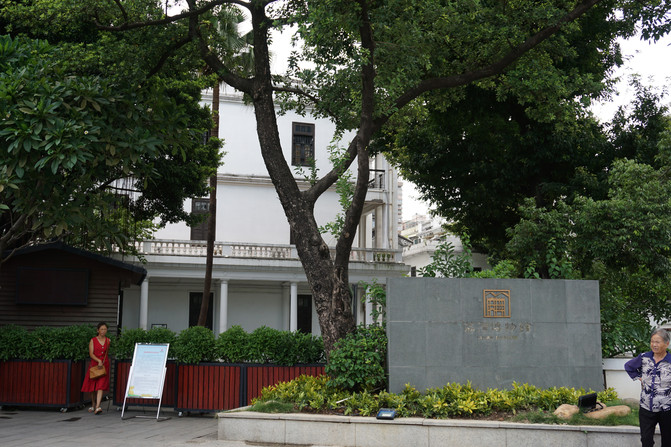
Mr. Chen Lianzhong's former residence can only be seen through the walls. The Western-style villa imitates Rome. The Greek columns and Western-style arches combine with the Lingnan courtyard in the courtyard to create a perfect view. But I'm really sorry I couldn't visit the museum today. I still haven't been able to see the Xiguan House, which has long been familiar with.

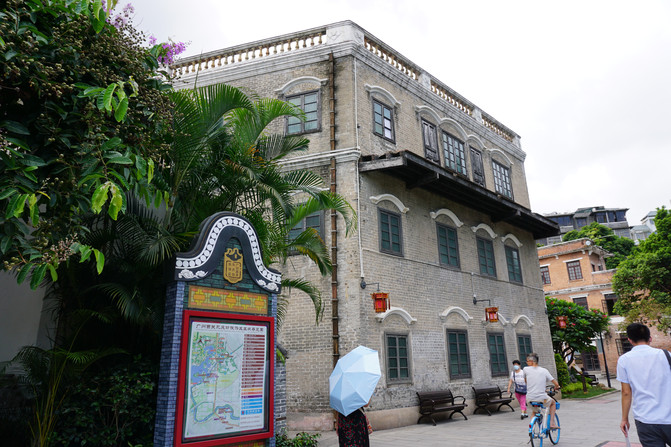
On one side is the former residence of General Jiang Guangnai. It is now also part of the museum, but unfortunately we can only watch the excitement outside the building.
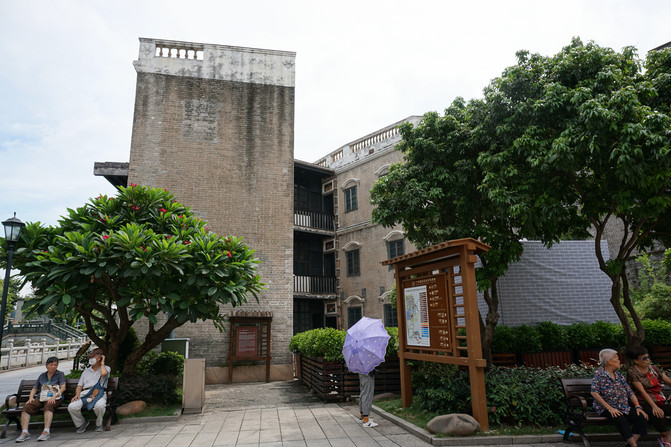
This building was built in the early years of the Republic of China. It is a three-story brick-and-wood structure. The architectural style combines the form of Xiguan House and Western-style buildings. It is a typical Lingnan mansion in modern times.
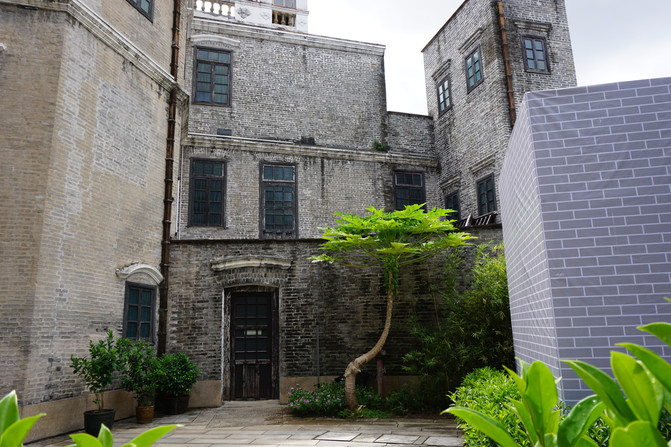
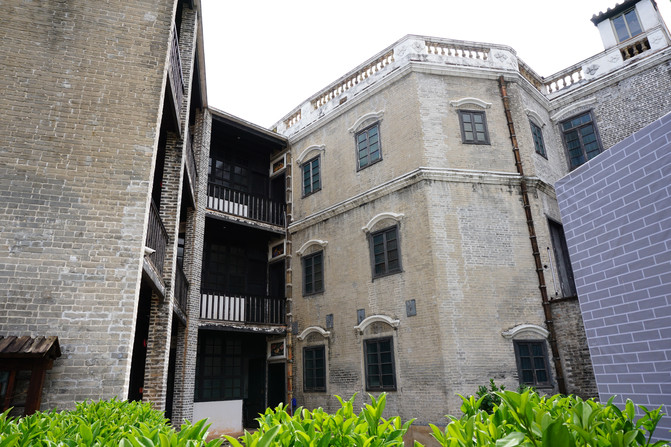
The south side of Fengyuan North Street is surrounded by several buildings to form a small square. The small building of the Puppet Art Theater of Guangdong Province, which is also the Xiguan Dawu Theater, is located on one side of the small square.
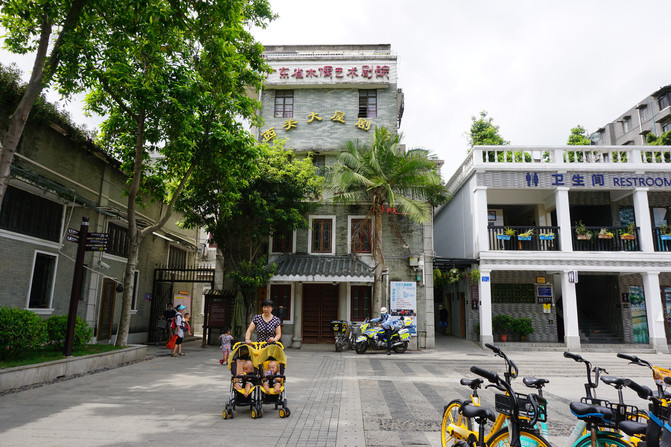
At the corner of the square is a residential building at No. 33 Fengyuan Street. It was built during the Republic of China. It is an old house in Lingnan that has accumulated the vicissitudes of history-Xiaohonglou.
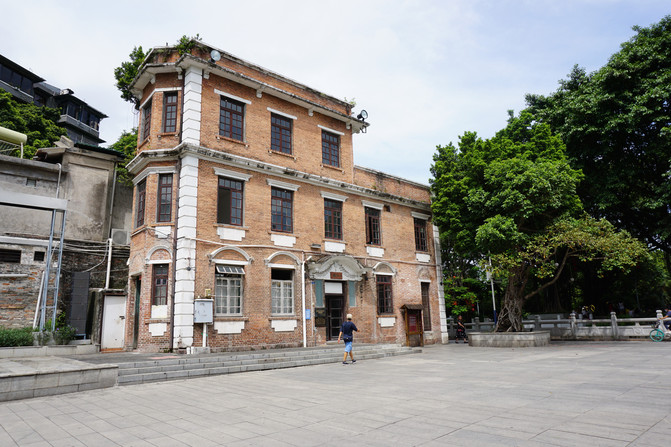
The second floor of the small building and the third floor have a very special feeling of being scattered. The outer wall on one side of the red brick is semi-hexagonal designed, with stone arched door frames, and exquisite stone carvings on the door frames.
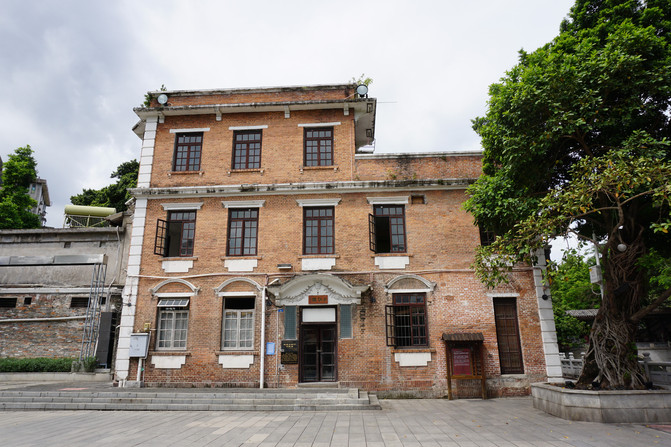
Happy citizens in the small square
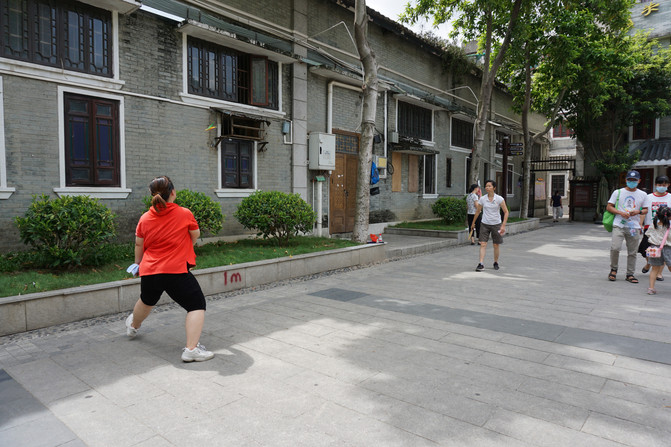
Walking northeast along the river corridor, the clear green water reflects the Lingnan-style buildings.
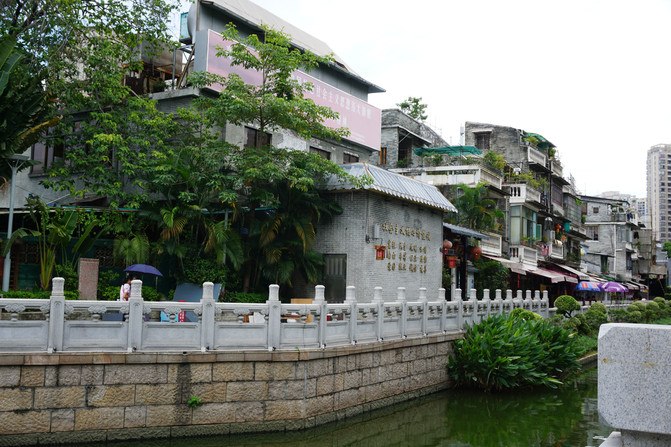
Litchi Bay, also known as Litchi Bay, is not an isolated river, but the general term for the water system crisscrossing with wetlands along the river.
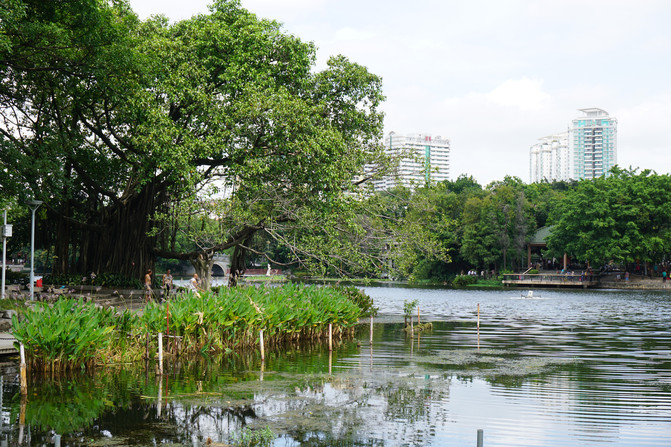
There are bridges, pavilions, and Xuanhe Pavilion on the rise of Litchi Bay. Coupled with the rich vegetation in Lingnan, there is green green everywhere and flowers are always unshakable, embellishing the garden.


There is an antique large stage beside the long river corridor. The stage uses one of the most distinctive symbols of Xiguan House-Manchuria Window. These square panes are inlaid with many colorful glass. The big house with blue bricks as the main body and colorful Manchurian windows are gorgeous and luxurious despite simplicity.

There must be bridges if there is a river. There are 5 bridges across Litchi Bay: Longjin Bridge, Dexing Bridge, Daguan Bridge, Zhishan Bridge, and Yongning Bridge. Each bridge has a different shape. This one is called Dexing Bridge.

Cross the small bridge and come to the west side of the river. The shops along the street here are all common businesses for the people.
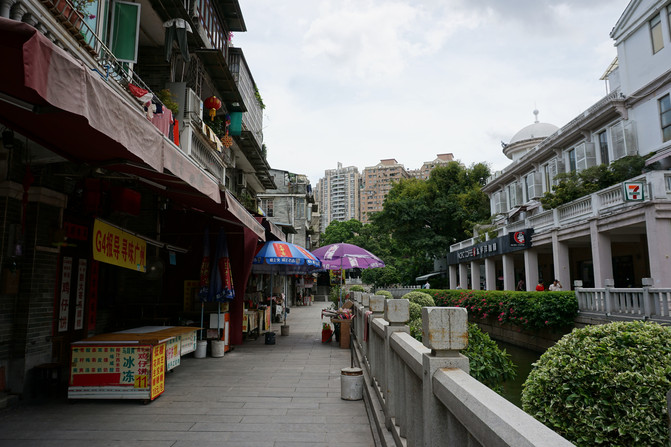
Looking at the buildings on the other side, this area is a combination of the characteristics of Xiguan Grand House and the characteristics of Western small buildings.
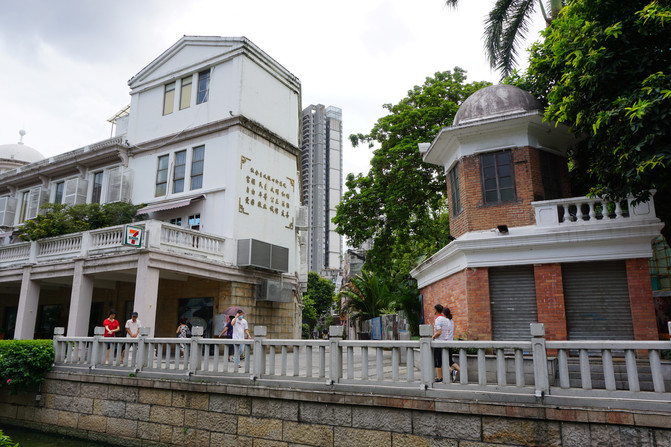
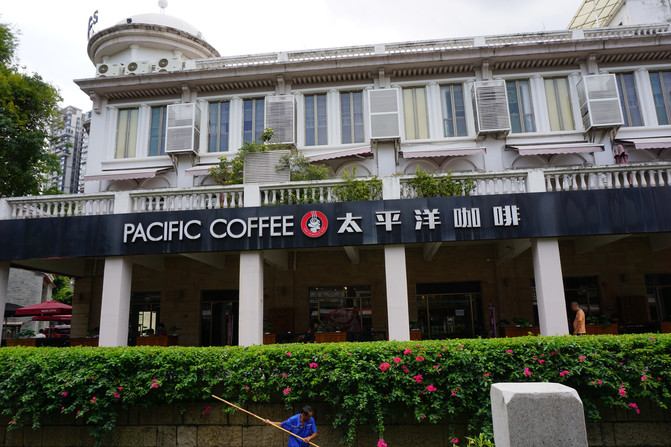
Cleanup workers with small boats in the river
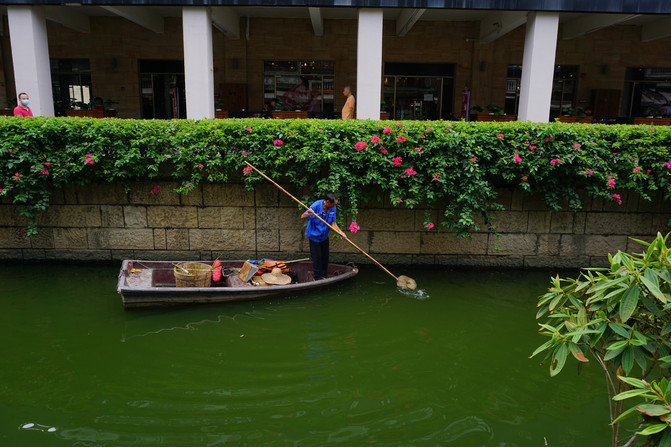
Starbucks is located in this garden castle-like building.
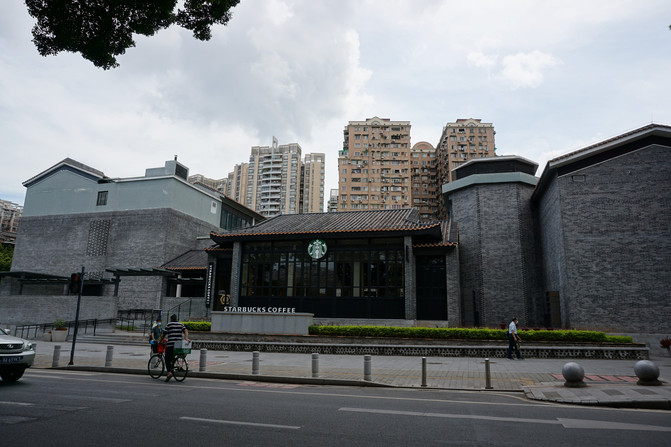
Time-honored Street in Liwan District

Liwan Lake Park
Address: No. 155, Longjin West Road, Liwan District, Guangzhou City (Liwan Lake Park)
Tickets: Free
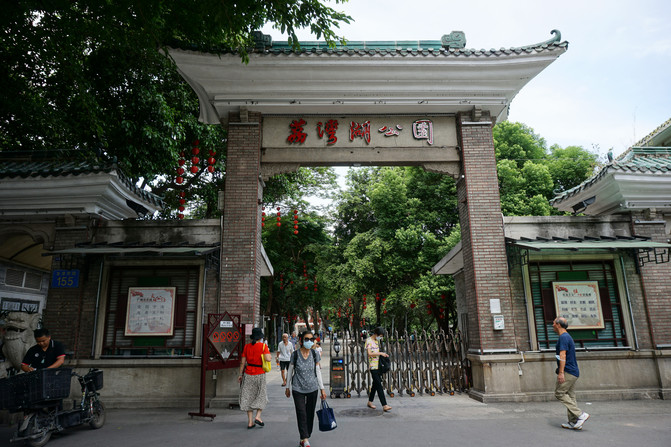
The park is dominated by a lake, with rippling blue waves. The lake is surrounded by green trees, and the green trees surround the lake.


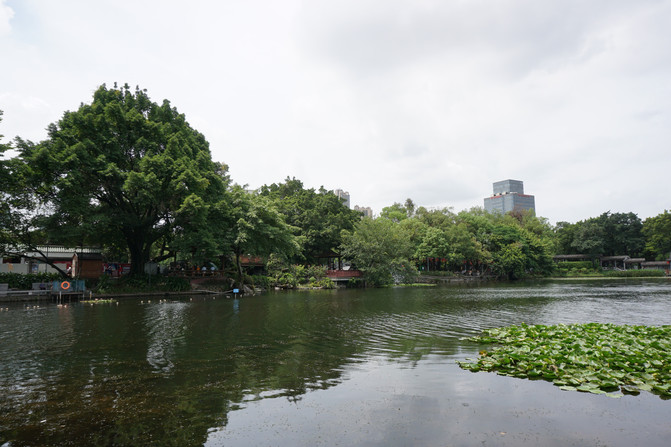
Pavilions, terraces, pavilions, corridors, pavilions and pavilions are located on the shores of green waters, above the blue waves, hidden among the green trees.


The park has shady trees, willow trees, green grass, curved bridges, pavilions, stone bridges, and waves of lakes. It is a beautiful southern scenery.

Each bridge above the lake has a different shape and is never the same
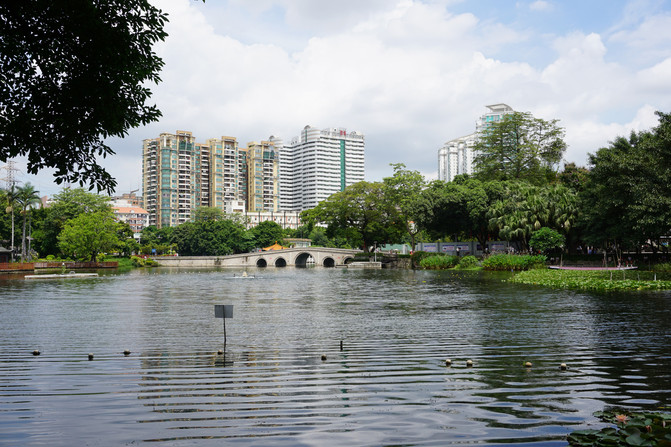
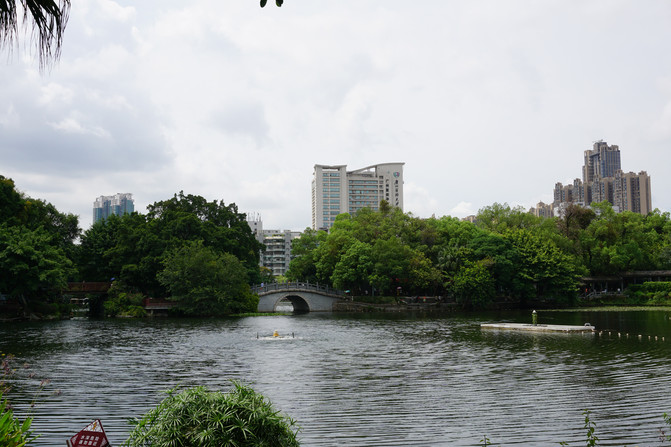
A woman's sculpture stands on the distant lake, reminding me of Mochou Lake in Nanjing.
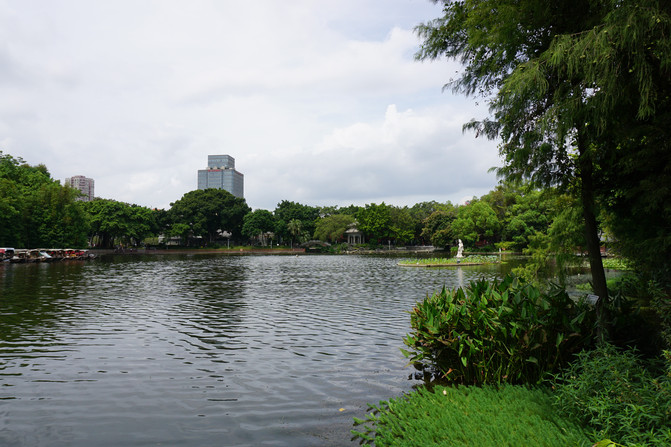
There is Panxi Restaurant, one of the three major garden restaurants in Guangzhou City.
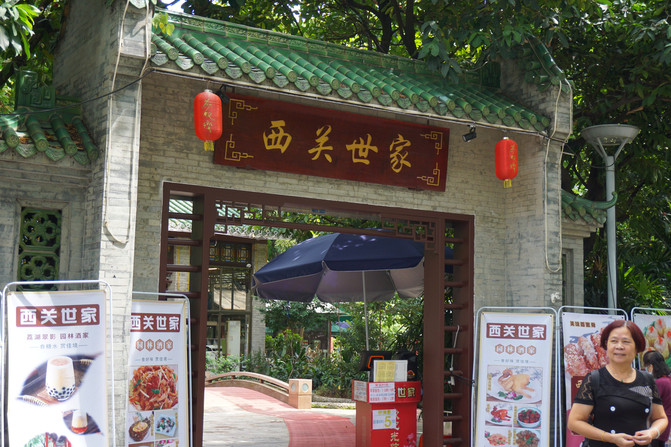
Yue Ying Building by the lake
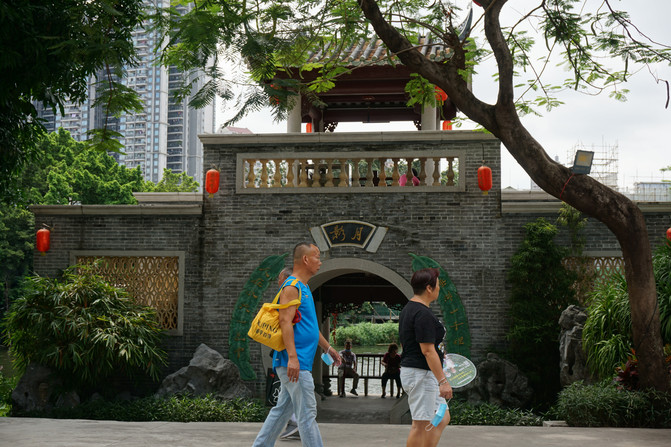
The pavilion by the lake is a good place for citizens to gather. They brought their own audio equipment and sang local operas that were beautiful but incomprehensible.
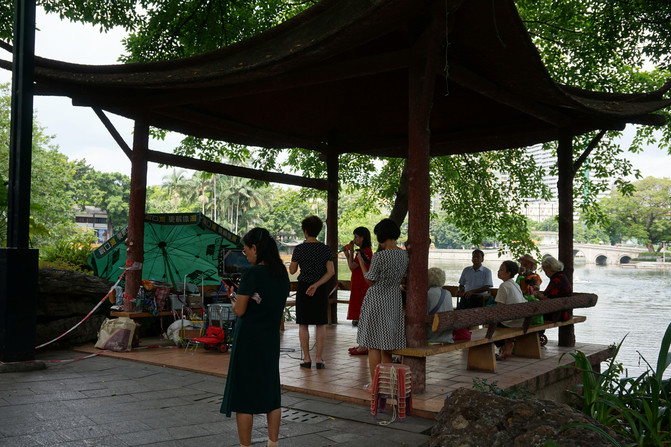
Summer lotus flowers make the Qingbo green water more charming.
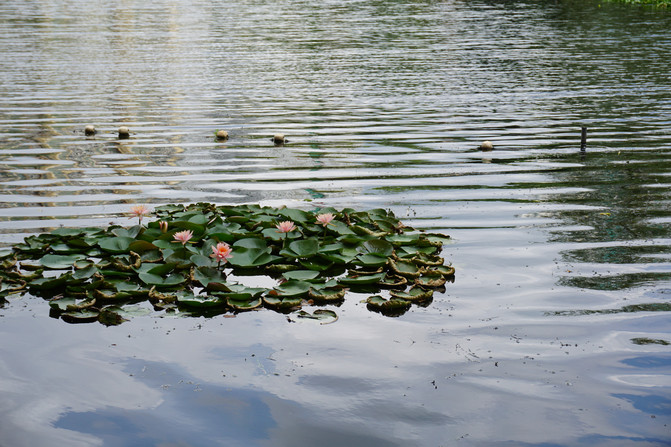
This lake water is completely occupied by lotus leaves.
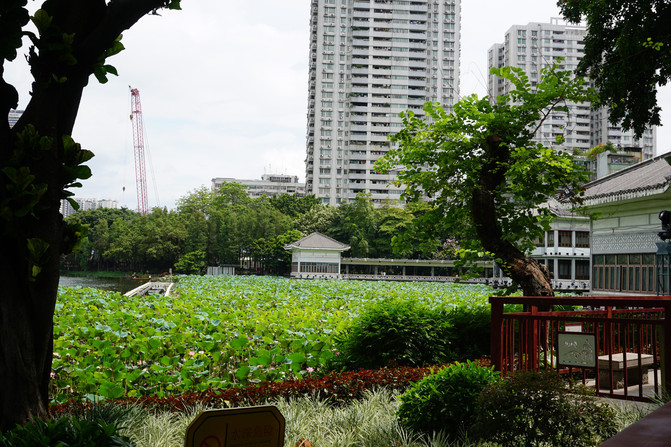
The white corridor runs over the lotus pond, and the rich sense of layers makes it more vivid.
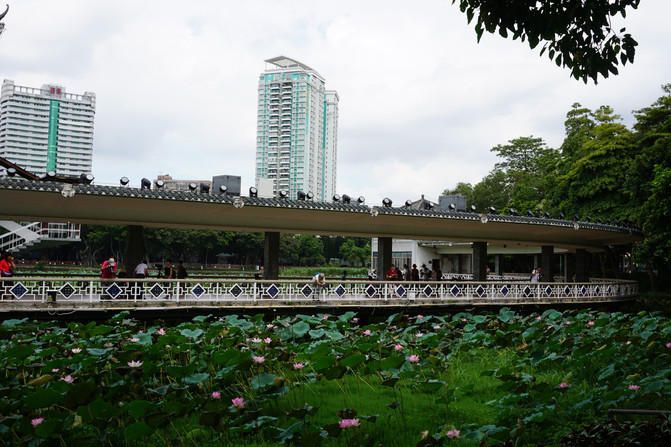
Dragon boats are also a feature of Lingnan!

Rockery and corridor in the corner of the park
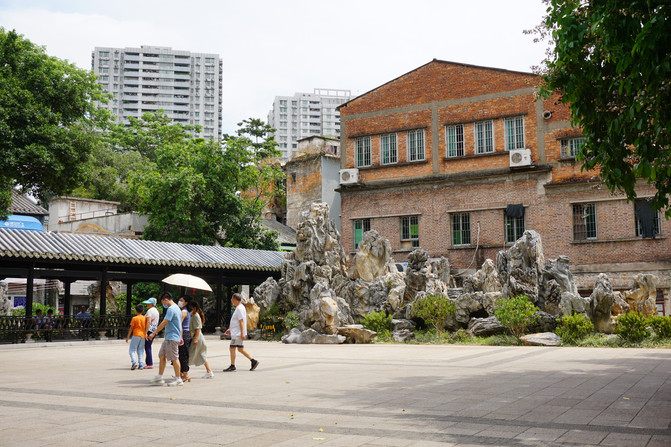
There is no vacant space on the long wall, and a science gallery was set up on the wall through pictures.
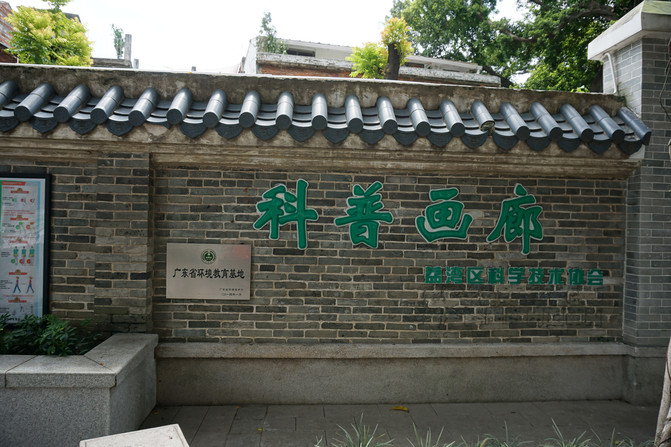
Small square near the lake

Private house by the park. The park is a citizen's park and is not clearly divided from the outside world.

A corridor plays a dividing role, and groups of partners gather under the corridor to chat.
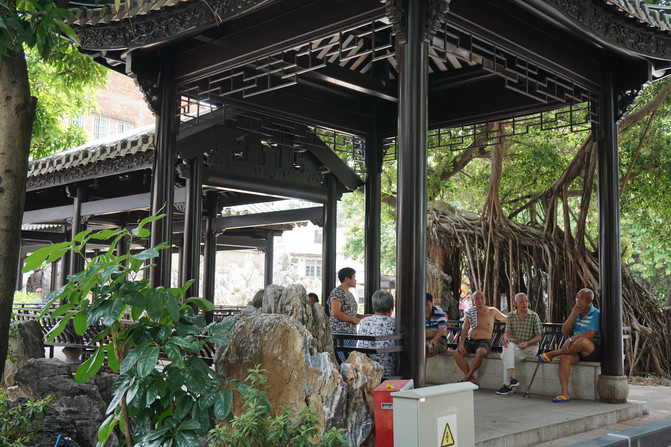
Here is a brief introduction to the "Pantang Five Treaties Historical and Cultural District". It turns out that this area adjacent to the park is almost the only rural settlement group in Guangzhou's history that retains the complete Qing Dynasty pattern, texture and typical simple style.
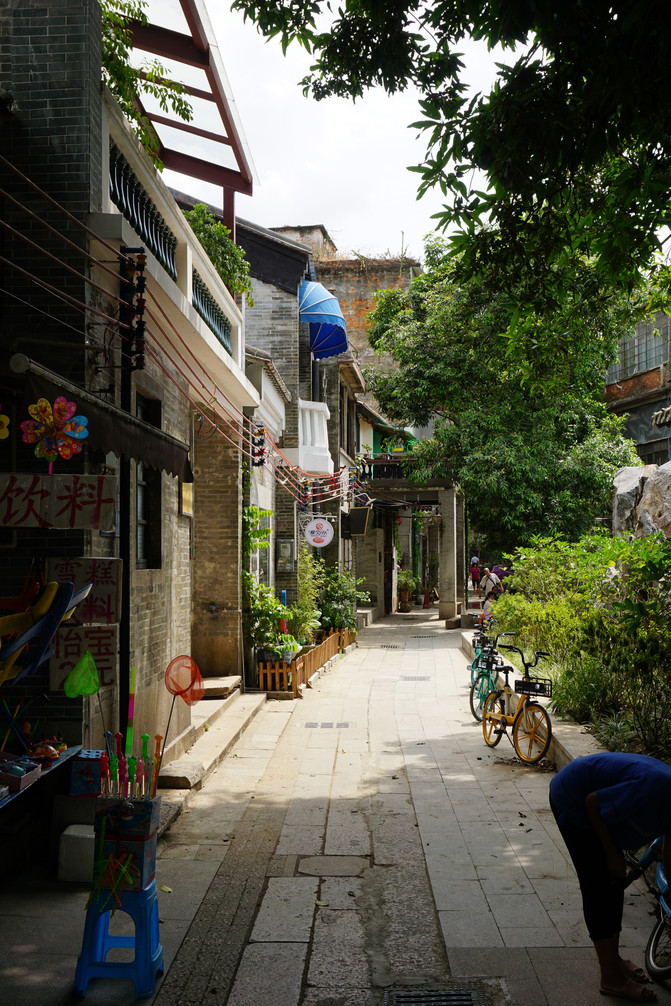
Looking at the time, I have to go back to the hotel to pick up my luggage and leave for the airport. I can only wait for next time. Next time will be a long time to come!
Previous Article:Guangzhou 24 hours, food, accommodation and play strategies
Next Article:On the "Spiritual Massage" journey, I met Zengcheng Forest Sea
